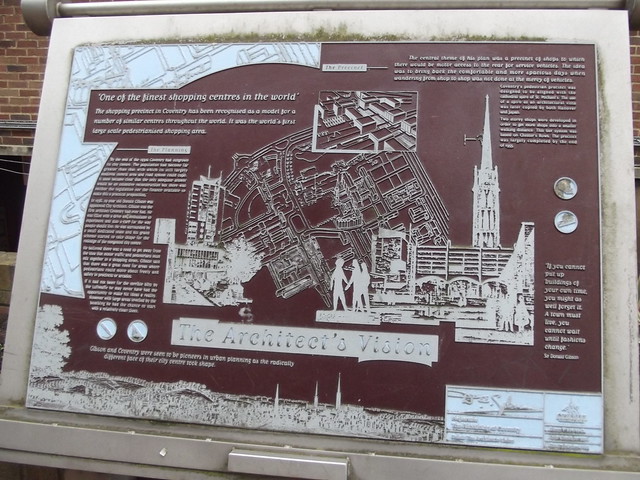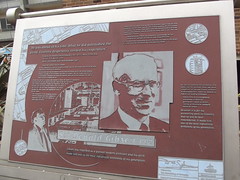The Architect's Vision Gibson and Coventry were seen to be pioneers in urban planning as the radically different face of their city centre took shape. 'One of the finest shopping centres in the world' The shopping precinct in Coventry has been recognised as a model for a number of similar centres throughout the world. It was the world's first large scale pedestrianised shopping area. The Planning By the end of the 1930s Coventry had outgrown it's city centre. The population had become far greater than that with which it's still largely medieval central area and road system could cope. It soon became clear that the only adequate answer would be an extensive reconstruction but there was neither the legislation nor the finance available to make this a practical proposition. In 1938, 29 year old Donald Gibson was appointed City Architect. Gibson was the first architect Coventry had ever had. He was filled with a drive and enthusiasm to experiment and also a care for the way people should live. He was surrounded by a small dedicated team and his grand scheme started to take shape for the redesign of the congested city centre. He believed there was a need to get away from the idea that motor traffic and pedestrians must mix together in a shopping street. Gibson said that pedestrians could move about freely and safely in precincts or arcades. If it had not been for the terrible blitz by the Luftwaffe he may never have had the opportunity to make his ideas a reality. However with large areas levelled by the bombing he had the chance to start with a relatively clean sheet. The Precinct The central theme of his plan was a precinct of shops to which there would be motor access to the rear for service vehicles. The idea was to bring back the comfortable and more spacious days when wondering from shop to shop was not done at the mercy of vehicles. Coventry's pedestrian precinct was designed to be aligned with the cathedral spire of St. Michael's. The use of a spire as an architectural vista was later copied by both Hanover and Japan. Two storey shops were developed in order to get more shops into a smaller walking distance. This tier system was based on Chester's Rows. The precinct was largely completed by the end of 1955. "If you cannot put up buildings of your own time, you might as well forget it. A town must live, you cannot wait until fashions change." Sir Donald Gibson
Colour: maroon
Wikimedia:
Flickr:



